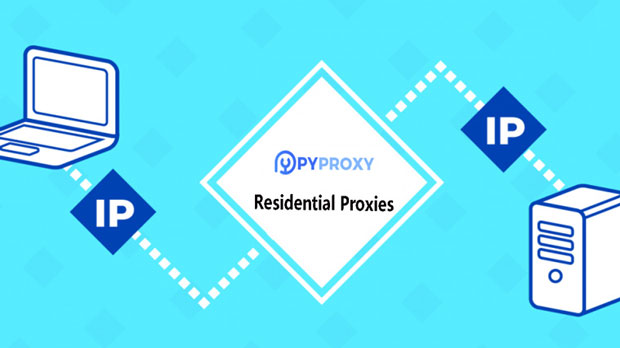When considering buying dedicated ip proxies, many users wonder about the performance differences between various regions. The performance of a dedicated ip proxy is not uniform and can vary considerably depending on several factors such as location, internet infrastructure, network load, and local regulations. These variables can affect speed, reliability, and connection stability, which are crucial for tasks like web scraping, accessing geo-restricted content, or maintaining anonymity. Understanding the regional performance differences can help users make informed decisions when selecting a dedicated IP proxy service for their specific needs. Factors Influencing Dedicated IP Proxy Performance by RegionThere are several key factors that contribute to the regional performance disparities of dedicated IP proxies. To understand how these factors impact proxy performance, let's dive into them one by one:1. Network InfrastructureThe quality and speed of internet connections vary significantly across regions due to differences in network infrastructure. Countries with well-developed internet infrastructure, such as the United States, Germany, or Japan, typically offer faster and more reliable proxies. These countries have access to high-speed fiber-optic connections and have multiple data centers around the world. As a result, proxies in these regions tend to perform better, with lower latency and faster speeds.In contrast, regions with less developed infrastructure, such as parts of Africa or Southeast Asia, may experience slower speeds, higher latency, and increased connection instability. This is because the local network infrastructure may be outdated or underdeveloped, leading to bottlenecks and slower data transfer.2. Server Location and DistanceThe physical distance between the user's location and the proxy server plays a crucial role in determining the performance. Proxies located closer to the user tend to provide faster speeds and lower latency due to the shorter distance the data needs to travel. On the other hand, proxies located farther away may experience higher latency, as the data has to travel over longer distances through multiple servers.For example, a user in Asia connecting to a proxy server in the United States will likely experience a delay compared to using a proxy server located in nearby countries like Singapore or Japan. This latency can impact activities such as online gaming, streaming, or real-time data collection.3. Local Network Congestion and TrafficIn heavily populated regions or areas with high internet traffic, network congestion can lead to slower proxy performance. During peak hours, when many users are online, dedicated IP proxies may suffer from reduced speeds or even downtime due to the overloaded network infrastructure. Regions with a high concentration of internet users, such as North America and Western Europe, may experience more congestion during busy times compared to regions with lower internet usage.4. Local Regulations and Internet CensorshipThe performance of a dedicated IP proxy can also be affected by local regulations and government-imposed internet censorship. In countries with strict internet regulations, such as China, Russia, or Iran, internet traffic may be heavily monitored or filtered. This can result in slower speeds, frequent connection interruptions, and limited access to certain websites or services.For instance, using a dedicated IP proxy in China may result in slower speeds due to the "Great Firewall," which restricts access to foreign websites and services. Similarly, in countries with strict censorship laws, proxy servers may be subject to additional scrutiny, causing delays or even banning certain proxy services.5. Data Center Quality and MaintenanceThe quality of the data center hosting the proxy server is another factor that influences regional performance. Premium data centers in developed regions typically offer more reliable and faster proxies. These data centers invest heavily in advanced technologies, such as redundant power supplies, fast processors, and high-quality networking equipment, to ensure that their servers perform at optimal levels.In contrast, data centers in less developed regions may lack these resources, leading to performance issues like server downtime or slower connection speeds. Additionally, if a data center experiences a maintenance issue or network failure, it can lead to prolonged outages, impacting the reliability of the dedicated IP proxy.Regional Performance Differences: A BreakdownLet's break down the performance differences in dedicated IP proxies based on specific regions:1. North America (USA, Canada)North America is one of the best regions for dedicated IP proxies in terms of performance. The United States, in particular, has a well-established internet infrastructure, with access to high-speed fiber-optic networks and numerous data centers across the country. Users can expect fast speeds, low latency, and reliable connections when using dedicated IP proxies in North America.Canada, with its stable and developed infrastructure, also provides solid proxy performance. However, due to its relatively lower population density compared to the United States, users may experience slightly less network congestion during peak hours.2. Western Europe (Germany, France, UK)Western Europe is another region with excellent dedicated IP proxy performance. Countries like Germany, the United Kingdom, and France have strong internet infrastructure, with numerous data centers and fast connections. Proxies in these regions tend to offer fast speeds and low latency, making them suitable for tasks such as web scraping, SEO, or content streaming.However, network congestion during peak hours can affect proxy speeds in highly populated cities, such as London or Paris. Users in less populated regions may experience fewer issues with congestion.3. Asia (Japan, Singapore, India)Asia is a diverse region with varying levels of dedicated IP proxy performance. Japan and Singapore have some of the best internet infrastructures in the world, with fast and reliable connections. Users in these countries can expect excellent proxy performance, especially for tasks requiring low latency, such as online gaming or real-time trading.However, in countries like India or parts of Southeast Asia, internet speeds may be slower, and network infrastructure may not be as advanced. This can lead to higher latency and slower proxy speeds, especially in rural or less-developed areas.4. Eastern Europe and RussiaEastern Europe and Russia offer mixed performance when it comes to dedicated IP proxies. Countries like Poland, Hungary, and the Czech Republic have good internet infrastructure, but network congestion and local regulations can sometimes affect speeds. Russia, on the other hand, has more restrictive internet policies, and proxies in the region may experience slower speeds or disruptions due to government surveillance and censorship.5. Middle East and AfricaThe Middle East and Africa generally have slower and less reliable dedicated IP proxies. While countries like the UAE and Saudi Arabia have made significant advancements in their internet infrastructure, other countries in the region still face challenges with outdated networks and lower speeds. African nations, in particular, often have less-developed internet infrastructure, leading to slower proxies with higher latency.In conclusion, the performance of dedicated IP proxies varies significantly depending on the region. Factors such as network infrastructure, server location, local regulations, and data center quality play key roles in determining the speed, reliability, and overall performance of a proxy. Users should carefully consider these factors when selecting a dedicated IP proxy service to ensure they choose a provider that meets their specific needs for optimal performance. By understanding these regional differences, users can make more informed decisions and enhance their overall internet experience.
Sep 11, 2025


































































